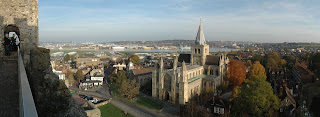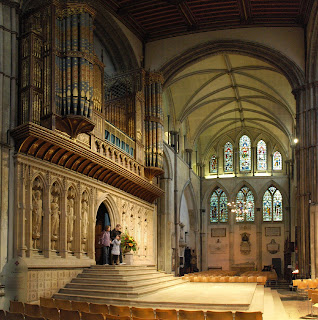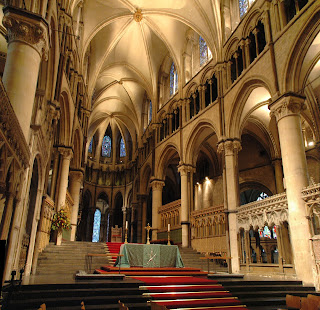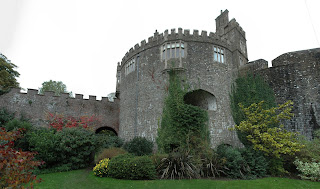Hallowe'en! We left Farthing Common — this time for the last time, we expect — and drove to Rochester. Here we hoped to get to Rochester Castle, a 12th century castle with one of the best preserved keeps either side of the Channel.
On the way, we stopped off at a large ASDA store to shop. We got to Rochester and found a park (pay and display) just below the castle. Problem was, the payment machine in the vicinity were all out of order. We spoke to the parking attendant, who was policing a permits-only area just up the street, and she told us that because f the faulty machines, she was not issuing notices at all in the Pay-and-Display -- so she invited us to park there as long as we wished! What a nice introduction to Rochester!
We walked up to the castle, which is very impressive. The old castle precinct still has some of the original curtain walls — it's now a well-used piece of parkland — and the keep dominates the whole site. We went in and started looking over the place. There were at least four floors inside, but none of them have survived. We were able to go up the stairs and into the galleries that went round each floor. But when we got up to the battlements at the top, the view is spectacular — views over the River Medway, and over Rochester Cathedral, which looked a very inviting place to visit, so we decided to go there after leaving the castle.
When we finally came out of the castle keep, we walked across to the cathedral, which is Norman in its architecture. Both the Cathedral and the Castle were constructed under the direction of Gundulf, Bishop of Rochester. Gundulf was responsible for a number of Norman castles and churches, including the Tower of London! (It's also quite possible that his name influenced Tolkien when he was deciding on the name of his central wizard, Gandalf.)
We enjoyed wandering the cathedral which, although old and steeped in history, is also vitally alive. They had a special exhibition of one of the later copies of Magna Carta — this was the 1300 text, not the original 1215 version, which we saw when we were up in York. Warren was more interested in a commentary written in Old English.
We had a lovely afternoon tea in the Cathedral Tea Room, and then walked about the streets of Rochester before we went back past the castle to the van and made our way out of Rochester.
We were aiming for a campsite, Tanner Farm, near Marden in Kent, about 20 miles south of Rochester, but when we got there, we found that reception closed at 3pm — it was now about 5pm. We had been driving through fog and dark, and weren't prepared to go on any further. Luckily they had a car park outside, beside a hops field. So we stopped there for the night.
Distance driven — today, 64 miles ( 103 km ); to date, 30,379 miles ( 48,891 km )










